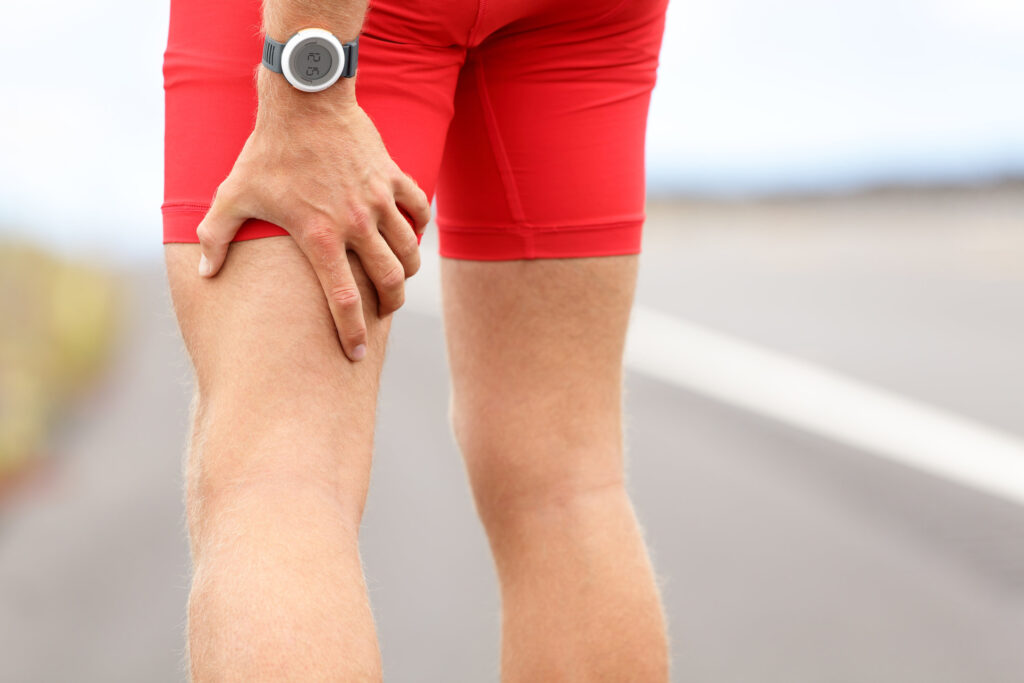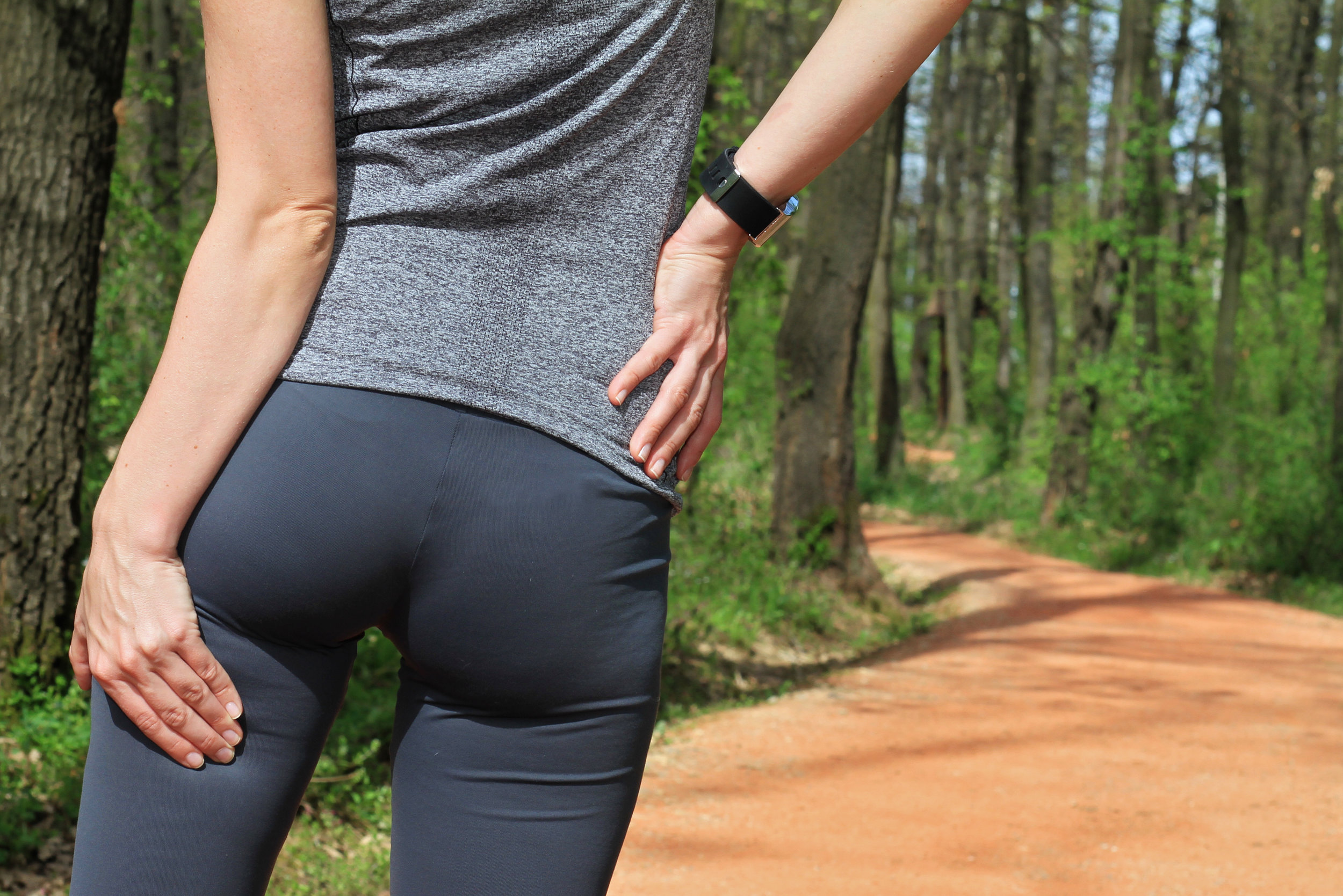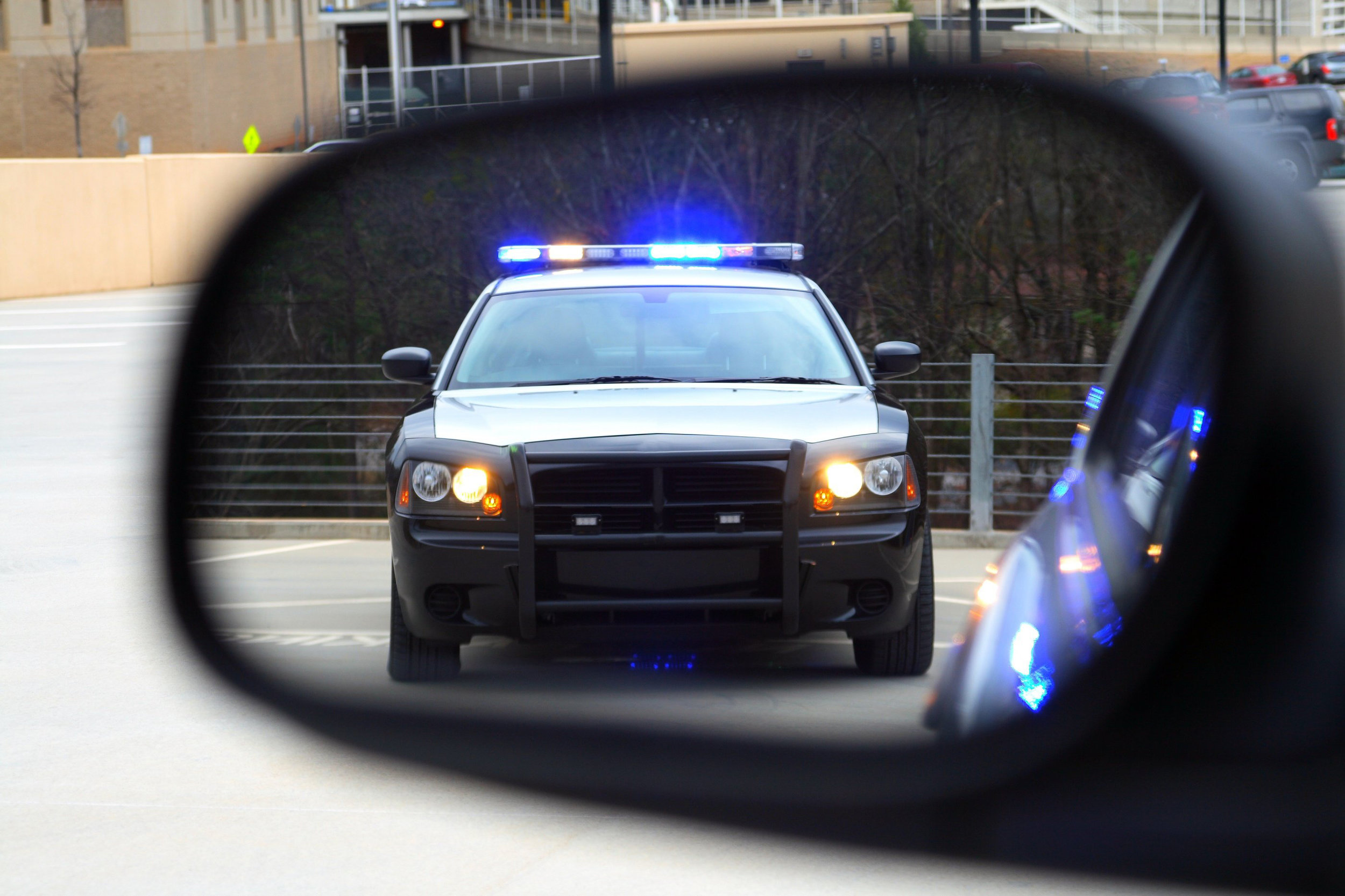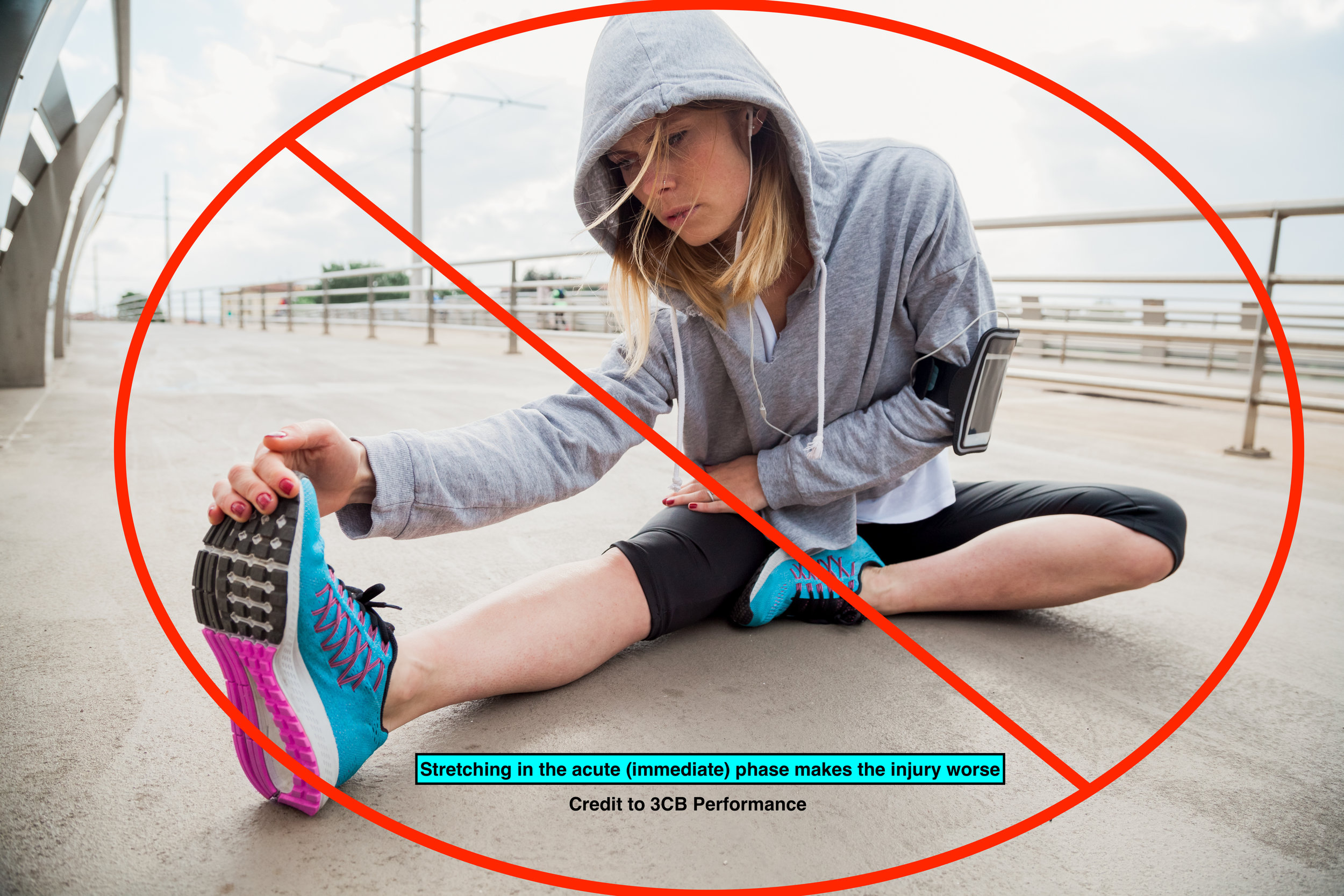A hamstring injury takes an average of 20 days to recover from with a 30% chance of re-injury in the first two months. Use these three “do’s and Don’t” to aide recovery and reduce re-injury risk
Hamstring injuries are all too common in the running community, a very unwelcome pang in the back of the leg that I’ve certainly felt a few times. However, there are proven ways that you can aide or hinder the recovery & return to running process. To that point, I’ve laid out three key DO’s and DON’Ts during different stages of the injury that will help you recover quicker while reducing the risk for re-injury.
Lets start with what to do and not do immediately after a hamstring strain:
#1 Do – POLICE the hamstring
In the acute aka immediate phase after a hamstring injury, the old adage of PRICE – Protect, Rest, Ice, Compress, Elevate – is outdated. Instead, the more effective technique is POLICE -Protect, Optimal Loading, Ice, Compress, Elevate^1.
Similar to PRICE, you still want to protect the hamstring such as using crutches to aide with walking if walking is painful, use compression like ACE bandage or taping for support, ice – 10 minutes on, 10 minutes off^2-5 – and keep it elevated to reduce pain & inflammation^6. However, rather than rest, you want to “optimally load” the hamstring by moving the leg through pain-free range of motion to aide with healing, blood flow, and maintaining strength and mobility^7.
#1 Don’t – Stretch the hamstring
In the acute (immediate) phase, stretching does much more harm than good. That’s because any hamstring strain involves some tearing of the muscle fibers and stretching interferes with their healing process. Stretching out torn muscle fibers during this healing phase is akin to yanking on a frayed rubber band.
The research shows two to six days of restricted motion (note, this doesn’t mean NO motion. Optimal loading!) reduces scar tissue formation and re-injury rates^8–13. Further, in one randomized control study, athletes treated with static stretching and progressive resistance exercises demonstrated significantly worse outcomes after two weeks and one year compared to those athletes treated with progressive agility, trunk stability, and resistance exercises.
If you’re itching to stretch something, stretch your quadriceps and hip flexors. Studies have shown that tight quads and hip flexors can increase the risk for hamstring injury^14,15.
Once you’re able to walk normally & take the hamstring through its full range of motion without pain, you’re into the intermediate phase. That brings us to the next DO & DON’T:
#2 Do – Step-wise rehab progression
To get the hamstring back to 100%, it’s critical to rebuild strength in the hamstring, improve control of the trunk & pelvis, & methodically re-acclimate to running. Based on the latest hamstring rehab research^10,16–19, I created a detailed stepwise plan that consists of four progressive phases. Once you can complete the allotted sets and reps/time of the current phase with ease, without soreness/tightness for more than 2 days after, and a pain level lower than 5 out of 10 (if you ever feel sharp or radiating/electrical pain, stop), move onto the next step.
Phase 1 (do this daily)
-
Strength
-
Isometric holds, 3 sets x 30 seconds
-
-
Conditioning and agility
-
Stationary bike x 10 mins, building up to 30 minutes
-
Side-step x 10 yards each way for 3 sets of 1 minute, low to moderate (mod) intensity
-
Grapevine walk x 10 yards each way for 3 sets of 1 minute, low to mod intensity
-
Phase 2 (do this five to seven days per week)
-
Concentric strengthening
-
Glute bridge progression, 3 sets x 12 reps with ease before moving to next step
-
-
Conditioning, agility, return to running
-
Low-speed jog, without pain x 5 minutes, building up to 20 minutes
-
Side-shuffle x 10 yards each way for 3 sets of 1 minute, mod to high intensity
-
Grapevine jog x 10 yards each way for 3 sets of 1 minute, mod to high intensity
-
Boxer shuffle x 10 yards for 2 sets of 1 minute, low to mod intensity
-
Phase 3 (five to seven days per week)
-
Eccentric strengthening, 3 sets x 12 reps. Begin with exercise one, working your way up to the maximum sets and reps. Once you can complete those without issue, progress to the next step at your next session. The final exercise has its own protocol that’s illustrated below.
-
-
The Nordic hamstring curl is the most effective strengthening exercise to help rehab and prevent future hamstring injuries^20–26. It’s an exercise you want to include even after returning to 100%. Here’s a 10+ week protocol to use:
-
-
Conditioning, agility, return to running
-
Mod speed jog, without pain x 5 minutes, building up to 20 minutes
-
I’d recommend shortening your stride and increasing your cadence (5 to 10% max) during this phase to decrease the stress on the hamstrings. A shorter stride/higher cadence results in less force through the leg and less tension on the hamstrings (due to decreased knee extension during terminal swing phase)
-
-
Side-shuffle x 30 yards each way for 3 sets of 1 minute, mod to high intensity
-
Grapevine jog x 30 yards for 3 sets of 1 minute, mod to high intensity
-
Boxer shuffle x 10 yards for 2 sets of 1 minute, mod to high intensity
-
A skips x 3 sets of 1 minute (start slow and go faster as able), progressing to B skips x 3 sets of 1 minute (start slow & go faster as able)
-
Backward and forward acceleration/deceleration x 3 sets of 1 minute, starting at 5 yards then progressing to 10 yards and finally 20 yards
-
Phase 4 (Full return to running)
-
Full range of motion without pain
-
No symptoms (tightness, soreness, pain) from phase 3
-
Walk-Sprint interval without pain x 5 sets, 50 yard walk-50 yard sprint
#2 Don’t – “Just Rest”
I cannot emphasize this enough (if you haven’t noticed) but rest does not address the underlying reason why the hamstring was injured in the first place. Hamstring strains in runners occur nearly exclusively because the hamstring was unable to handle the amount of stress placed on it, resulting in tears in the muscle fibers. Therefore, we have to re-strengthen the muscle and improve or develop neuromuscular control of the trunk and pelvis, all the while respecting the biology of the healing process.
If you do not address the underlying causes, there’s a significantly higher chance you will re-injure the hamstring and have to start the entire process all over again.
Overlying all of the guidelines I’ve given thus far are the last, but certainly not least, DO and DON’T:
#3 DO – See a running expert medical provider
I understand that seeing a medical provider, ideally a running-centric one in this scenario, isn’t always practical for a variety of reasons. To that point, I’ve done my best to give you enough information and tools to get you through the rehab process yourself. However, if able, I highly recommend seeing a medical provider because what I’ve touched on is just the tip of the iceberg. The expertise and information from in-person assessment, guidance, and treatment provides many benefits in the short, medium, and long-term.
For example, hamstring strains vary not only by severity but also by location. The specific muscle that’s injured – the hamstrings are a group of four muscles – or the location of the strain (eg in the muscle belly vs at the tendinous insertion of the muscle) can change the plan of care and shorten or lengthen the expected timetable for return.
Additionally, your hamstring injury may be influenced by previous injuries or workload which can be teased out by an expert. Further, although the hamstring rehab protocols I’ve laid out for you are good foundations for rehab & recovery, I had to omit numerous details that require expert assessment, observation, and would be beyond the scope of someone not trained in the field.
Further, seeing a running focused medical provider is going to benefit you even more. For one, they understand how important running is to your identity and health, both mental and physical. For two, there are running specific elements that can influence your recovery. I’ll use my own process as an example:
Whenever a runner comes in with a hamstring injury – in addition to the elements I’ve covered in this piece – I place a heavy emphasis on running gait analysis.
Running form, technique, and efficiency modulates the extent and duration of stress on key muscles, including the hamstrings. For example, research shows that changes in running gait biomechanics from previous injury and running with lower back lordosis and anterior pelvic tilt predisposes a runner to more stress on the hamstrings & therefore higher risk for injury^27–29. To identify those factors, and many more, I use dual-angle video for running gait analysis combined with manual evaluation to identify root causes and create a plan of action.
#3 DON’T – Take hamstring injuries lightly
On average, a hamstring injury takes a little under twenty days to recover from^30 and even if you’re on the faster end of recovery, at least two weeks^10. Further, nearly 30 percent of people with a hamstring injury develop recurring hamstring strains, with some studies reporting rates as high as 60 to 70 percent^9,29,31,32. The majority of these hamstring re-injuries occur within the first two months after return to sport, with an increased risk thereafter^33–35. In one study, that increased risk was three times that of an uninjured athlete for up to one whole year following the initial injury^36.
For all these reasons, it’s critical to take any hamstring injury seriously. Appropriate healing & recovery, progressive rehab that addresses symptoms and underlying causes, and a methodical return to running are key to keeping you out of the injury-reinjury downward spiral. A spiral I’ve witnessed far too many times. My hope is this article will help youget back to 100% after a hamstring strain, avoid re-injury, and back to doing what you love & identify with, running.
Feel free to reach out with any questions and you can read more blog posts here.
Sources:
-
Bleakley CM, Glasgow P, MacAuley DC. PRICE needs updating, should we call the POLICE? Br J Sports Med. 2012;46(4):220-221. doi:10.1136/bjsports-2011-090297.
-
Bleakley CM, McDonough SM, MacAuley DC, Bjordal J. Cryotherapy for acute ankle sprains: a randomised controlled study of two different icing protocols. Br J Sports Med. 2006;40(8):700-5; discussion 705. doi:10.1136/bjsm.2006.025932.
-
Bleakley C, McDonough S, MacAuley D. The use of ice in the treatment of acute soft-tissue injury: a systematic review of randomized controlled trials. Am J Sports Med. 32(1):251-261. doi:10.1177/0363546503260757.
-
Ho SS, Illgen RL, Meyer RW, Torok PJ, Cooper MD, Reider B. Comparison of various icing times in decreasing bone metabolism and blood flow in the knee. Am J Sports Med. 23(1):74-76. doi:10.1177/036354659502300112.
-
Ivins D. Acute ankle sprain: an update. Am Fam Physician. 2006;74(10):1714-1720. http://www.ncbi.nlm.nih.gov/pubmed/17137000.
-
Scott A, Khan KM, Roberts CR, Cook JL, Duronio V. What do we mean by the term “inflammation”? A contemporary basic science update for sports medicine. Br J Sports Med. 2004;38(3):372-380. http://www.ncbi.nlm.nih.gov/pubmed/15155453.
-
Glasgow P, Phillips N, Bleakley C. Optimal loading: key variables and mechanisms. Br J Sports Med. 2015;49(5):278-279. http://www.ncbi.nlm.nih.gov/pubmed/25950028.
-
Mason DL, Dickens V, Vail A. Rehabilitation for hamstring injuries. Cochrane database Syst Rev. 2007;(1):CD004575. doi:10.1002/14651858.CD004575.pub2.
-
Sherry MA, Best TM. A comparison of 2 rehabilitation programs in the treatment of acute hamstring strains. J Orthop Sports Phys Ther. 2004;34(3):116-125. doi:10.2519/jospt.2004.34.3.116.
-
Heiderscheit BC, Sherry MA, Silder A, Chumanov ES, Thelen DG. Hamstring strain injuries: recommendations for diagnosis, rehabilitation, and injury prevention. J Orthop Sports Phys Ther. 2010;40(2):67-81. http://www.ncbi.nlm.nih.gov/pubmed/20118524.
-
Hoskins W, Pollard H. Hamstring injury management–Part 2: Treatment. Man Ther. 2005;10(3):180-190. doi:10.1016/j.math.2005.05.001.
-
Malliaropoulos N, Papalexandris S, Papalada A, Papacostas E. The role of stretching in rehabilitation of hamstring injuries: 80 athletes follow-up. Med Sci Sports Exerc. 2004;36(5):756-759. http://www.ncbi.nlm.nih.gov/pubmed/15126706.
-
Kӓӓriӓinen M, Jӓrvinen T, Ӓӓrimaa V. Skeletal Muscle Repair after exercise-induced injury. In: Skeletal Muscle Repair after Exercise-Induced Injury. New York; 2008:224.
-
Gabbe BJ, Finch CF, Bennell KL, Wajswelner H. Risk factors for hamstring injuries in community level Australian football. Br J Sports Med. 2005;39(2):106-110. doi:10.1136/bjsm.2003.011197.
-
Gabbe BJ, Bennell KL, Finch CF. Why are older Australian football players at greater risk of hamstring injury? J Sci Med Sport. 2006;9(4):327-333. doi:10.1016/j.jsams.2006.01.004.
-
Askling CM, Tengvar M, Thorstensson A. Acute hamstring injuries in Swedish elite football: a prospective randomised controlled clinical trial comparing two rehabilitation protocols. Br J Sports Med. 2013;47(15):953-959. doi:10.1136/bjsports-2013-092165.
-
Askling CM, Tengvar M, Tarassova O, Thorstensson A. Acute hamstring injuries in Swedish elite sprinters and jumpers: a prospective randomised controlled clinical trial comparing two rehabilitation protocols. Br J Sports Med. 2014;48(7):532-539. doi:10.1136/bjsports-2013-093214.
-
Pas HIMFL, Reurink G, Tol JL, Weir A, Winters M, Moen MH. Efficacy of rehabilitation (lengthening) exercises, platelet-rich plasma injections, and other conservative interventions in acute hamstring injuries: an updated systematic review and meta-analysis. Br J Sports Med. 2015;49(18):1197-1205. doi:10.1136/bjsports-2015-094879.
-
Sherry MA, Johnston TS, Heiderscheit BC. Rehabilitation of acute hamstring strain injuries. Clin Sports Med. 2015;34(2):263-284. doi:10.1016/j.csm.2014.12.009.
-
Askling C, Karlsson J, Thorstensson A. Hamstring injury occurrence in elite soccer players after preseason strength training with eccentric overload. Scand J Med Sci Sports. 2003;13(4):244-250. http://www.ncbi.nlm.nih.gov/pubmed/12859607.
-
Mjølsnes R, Arnason A, Østhagen T, Raastad T, Bahr R. A 10-week randomized trial comparing eccentric vs. concentric hamstring strength training in well-trained soccer players. Scand J Med Sci Sports. 2004;14(5):311-317. doi:10.1046/j.1600-0838.2003.367.x.
-
Arnason A, Andersen TE, Holme I, Engebretsen L, Bahr R. Prevention of hamstring strains in elite soccer: an intervention study. Scand J Med Sci Sports. 2008;18(1):40-48. doi:10.1111/j.1600-0838.2006.00634.x.
-
Petersen J, Thorborg K, Nielsen MB, Budtz-Jørgensen E, Hölmich P. Preventive effect of eccentric training on acute hamstring injuries in men’s soccer: a cluster-randomized controlled trial. Am J Sports Med. 2011;39(11):2296-2303. doi:10.1177/0363546511419277.
-
van der Horst N, Smits D-W, Petersen J, Goedhart EA, Backx FJG. The preventive effect of the nordic hamstring exercise on hamstring injuries in amateur soccer players: a randomized controlled trial. Am J Sports Med. 2015;43(6):1316-1323. doi:10.1177/0363546515574057.
-
Goode AP, Reiman MP, Harris L, et al. Eccentric training for prevention of hamstring injuries may depend on intervention compliance: a systematic review and meta-analysis. Br J Sports Med. 2015;49(6):349-356. doi:10.1136/bjsports-2014-093466.
-
Brukner P. Hamstring injuries: prevention and treatment-an update. Br J Sports Med. 2015;49(19):1241-1244. doi:10.1136/bjsports-2014-094427.
-
Cibulka MT, Rose SJ, Delitto A, Sinacore DR. Hamstring muscle strain treated by mobilizing the sacroiliac joint. Phys Ther. 1986;66(8):1220-1223. http://www.ncbi.nlm.nih.gov/pubmed/3737692.
-
Verrall GM, Slavotinek JP, Barnes PG, Fon GT, Spriggins AJ. Clinical risk factors for hamstring muscle strain injury: a prospective study with correlation of injury by magnetic resonance imaging. Br J Sports Med. 2001;35(6):435-9; discussion 440. http://www.ncbi.nlm.nih.gov/pubmed/11726483.
-
Orchard JW. Intrinsic and extrinsic risk factors for muscle strains in Australian football. Am J Sports Med. 29(3):300-303. doi:10.1177/03635465010290030801.
-
Ekstrand J, Waldén M, Hägglund M. Hamstring injuries have increased by 4% annually in men’s professional football, since 2001: a 13-year longitudinal analysis of the UEFA Elite Club injury study. Br J Sports Med. 2016;50(12):731-737. doi:10.1136/bjsports-2015-095359.
-
Prior M, Guerin M, Grimmer K. An evidence-based approach to hamstring strain injury: a systematic review of the literature. Sports Health. 2009;1(2):154-164. doi:10.1177/1941738108324962.
-
Mason DL, Dickens VA, Vail A. Rehabilitation for hamstring injuries. Cochrane database Syst Rev. 2012;12:CD004575. doi:10.1002/14651858.CD004575.pub3.
-
Gabbe BJ, Bennell KL, Finch CF, Wajswelner H, Orchard JW. Predictors of hamstring injury at the elite level of Australian football. Scand J Med Sci Sports. 2006;16(1):7-13. doi:10.1111/j.1600-0838.2005.00441.x.
-
Bennell K, Wajswelner H, Lew P, et al. Isokinetic strength testing does not predict hamstring injury in Australian Rules footballers. Br J Sports Med. 1998;32(4):309-314. http://www.ncbi.nlm.nih.gov/pubmed/9865403.
-
Arnason A, Sigurdsson SB, Gudmundsson A, Holme I, Engebretsen L, Bahr R. Risk factors for injuries in football. Am J Sports Med. 32(1 Suppl):5S-16S. doi:10.1177/0363546503258912.
-
Hägglund M, Waldén M, Ekstrand J. Previous injury as a risk factor for injury in elite football: a prospective study over two consecutive seasons. Br J Sports Med. 2006;40(9):767-772. doi:10.1136/bjsm.2006.026609.








